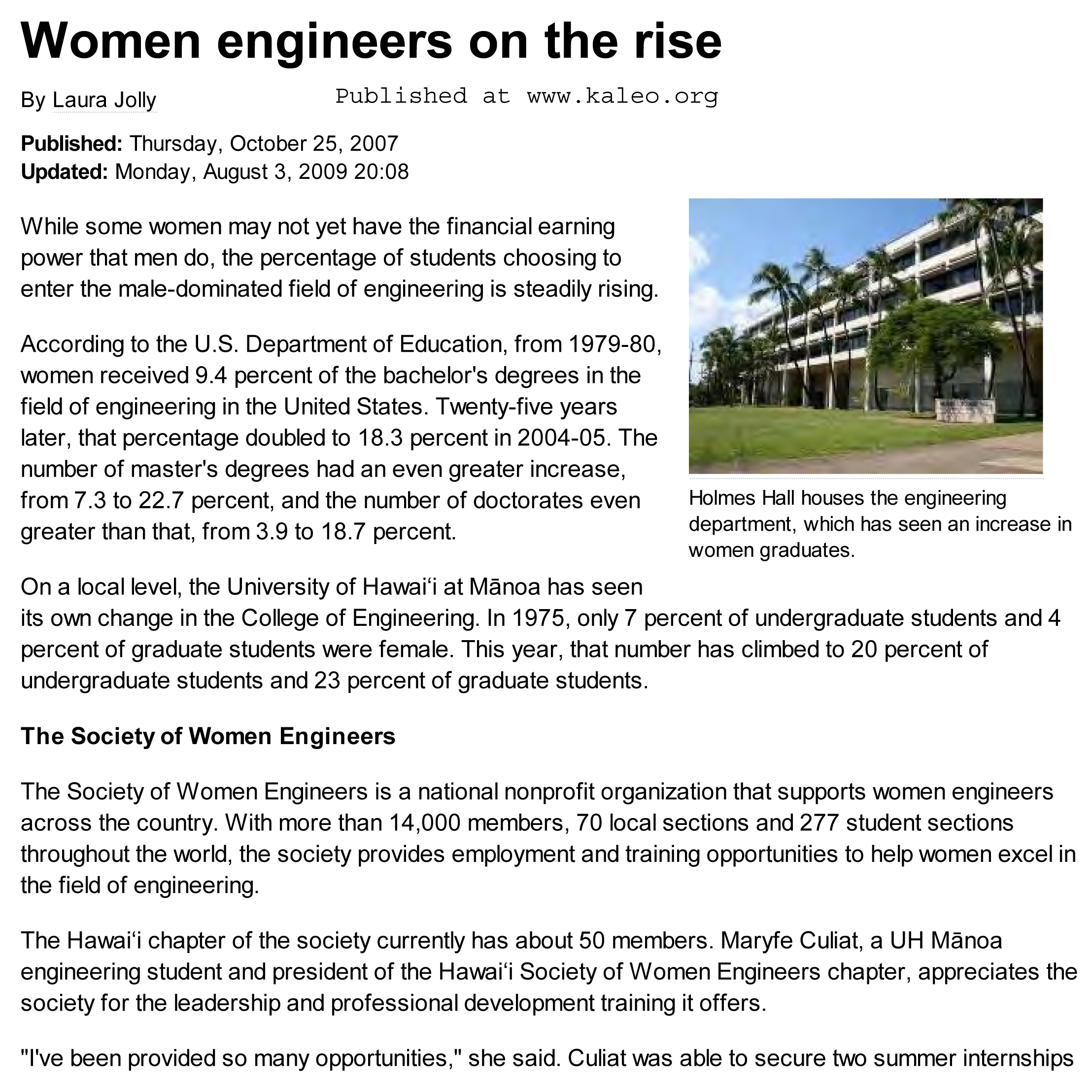Originally published in Ka Leo, UH Mānoa’s student-run newspaper – October 25, 2007
WOMEN ENGINEERS ON THE RISE (Click for the PDF version) (View online at kaleo.org)
While some women may not yet have the financial earning power that men do, the percentage of students choosing to enter the male-dominated field of engineering is steadily rising.
According to the U.S. Department of Education, from 1979-80, women received 9.4 percent of the bachelor’s degrees in the field of engineering in the United States. Twenty-five years later, that percentage doubled to 18.3 percent in 2004-05. The number of master’s degrees had an even greater increase, from 7.3 to 22.7 percent, and the number of doctorates even greater than that, from 3.9 to 18.7 percent.
On a local level, the University of Hawai‘i at Mānoa has seen its own change in the College of Engineering. In 1975, only 7 percent of undergraduate students and 4 percent of graduate students were female. This year, that number has climbed to 20 percent of undergraduate students and 23 percent of graduate students.
The Society of Women Engineers
The Society of Women Engineers is a national nonprofit organization that supports women engineers across the country. With more than 14,000 members, 70 local sections and 277 student sections throughout the world, the society provides employment and training opportunities to help women excel in the field of engineering.
The Hawai‘i chapter of the society currently has about 50 members. Maryfe Culiat, a UH Mānoa engineering student and president of the Hawai‘i Society of Women Engineers chapter, appreciates the society for the leadership and professional development training it offers.
“I’ve been provided so many opportunities,” she said. Culiat was able to secure two summer internships through the society and is currently looking for a job.
The Society of Women Engineers conducts outreach programs in the local middle and high schools to raise interest in the field of engineering. It also provides opportunities for college students through seminars and talks by community professionals. The society is supported by the organization Women in Technology, which funds conference trips and events.
Inside the classroom
While the number of female engineering students continues to grow, they are definitely still the minority.
“I’ve had classes where I’ve been the only female student,” said Culiat.
However, Kristi Kawakami, a senior in mechanical engineering at UH Mānoa, doesn’t find being in the gender minority to be a problem.
“A lot of people are accepting of that fact,” she said. While there is always the challenge of trying to compete with the guys, Kawakami said she tries to remain different and not just become “one of the guys.”
“I try to find my own within their realm,” she said.
Culiat emphasized the bond between the female engineering students. “We have to stick together because we’re in the minority group,” she said. However, she said that it doesn’t keep her from forming friendships with her male classmates.
Despite the small number of fellow female students, both Culiat and Kawakami do not have any apprehension about moving into a male-dominated workforce. They both agreed that their internships gave them a feel for what being a female engineer is all about.
“It takes a little getting used to,” said Culiat, “but after a while, it’s all good.”

